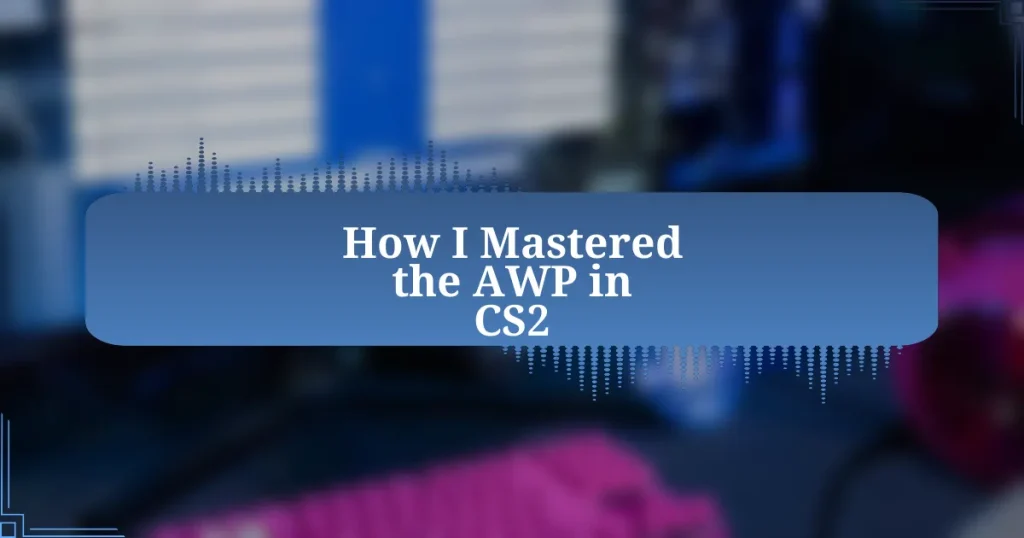Key takeaways:
- The AWP in CS2 requires precision, patience, and understanding of its mechanics to be effective.
- Positioning and communication with teammates are crucial for maximizing the impact of the AWP role.
- Practicing crosshair placement, flick shots, and managing emotions can lead to consistent AWP success.
- Embracing both the thrill and pressure of being an AWP player can significantly enhance gameplay and performance.
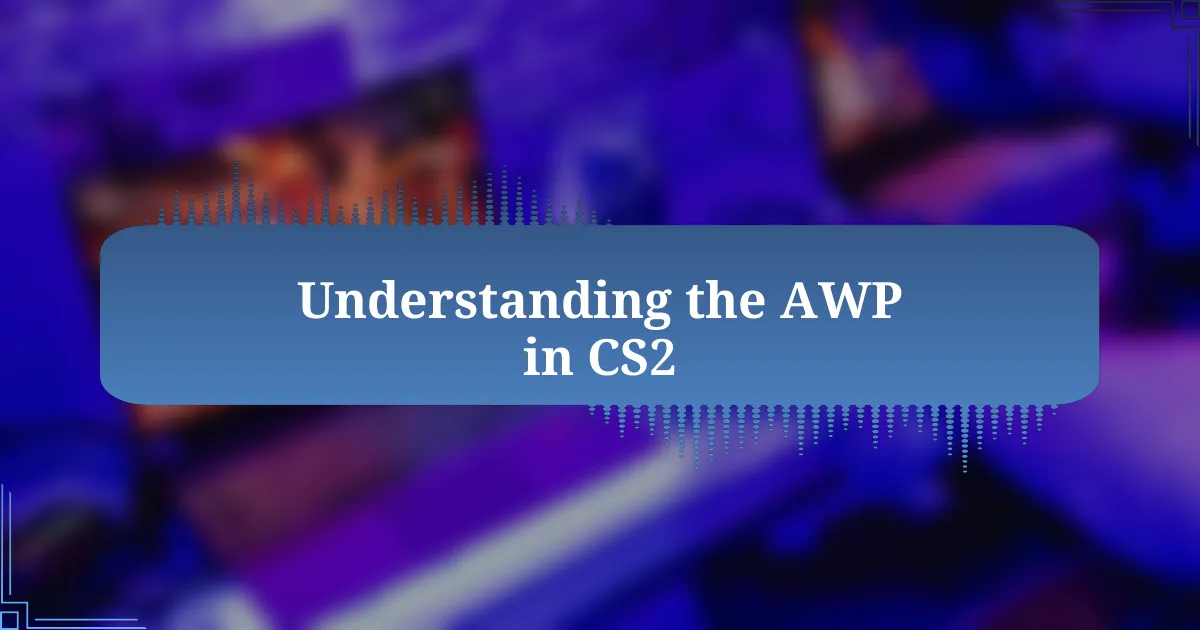
Understanding the AWP in CS2
The AWP, or Arctic Warfare Police, stands out as one of the most iconic sniper rifles in CS2. It’s not just about having a powerful weapon; it’s about mastering its unique mechanics and understanding its role in gameplay. I remember the first time I picked it up; the weight of expectation felt immense. I could take down opponents with a single shot, but that pressure made me question whether I could handle it.
One of the most critical aspects to grasp is the weapon’s firing mechanics. Unlike other rifles, the AWP requires precision and patience. You can’t spray and pray; that’s a recipe for disaster. I learned this the hard way during a crucial match when I rushed my shots and ended up with a disheartening score. It made me realize how vital it is to take a moment, align my sights, and really focus on each shot.
There’s also an emotional aspect to wielding the AWP. It’s exhilarating when you land that perfect shot, but it can also be nerve-wracking, especially when you’re the one holding that all-important angle. The anticipation builds, and you find yourself asking: “Will I be quick enough?” Embracing both the thrill and the pressure is part of the journey to mastering the AWP in CS2.
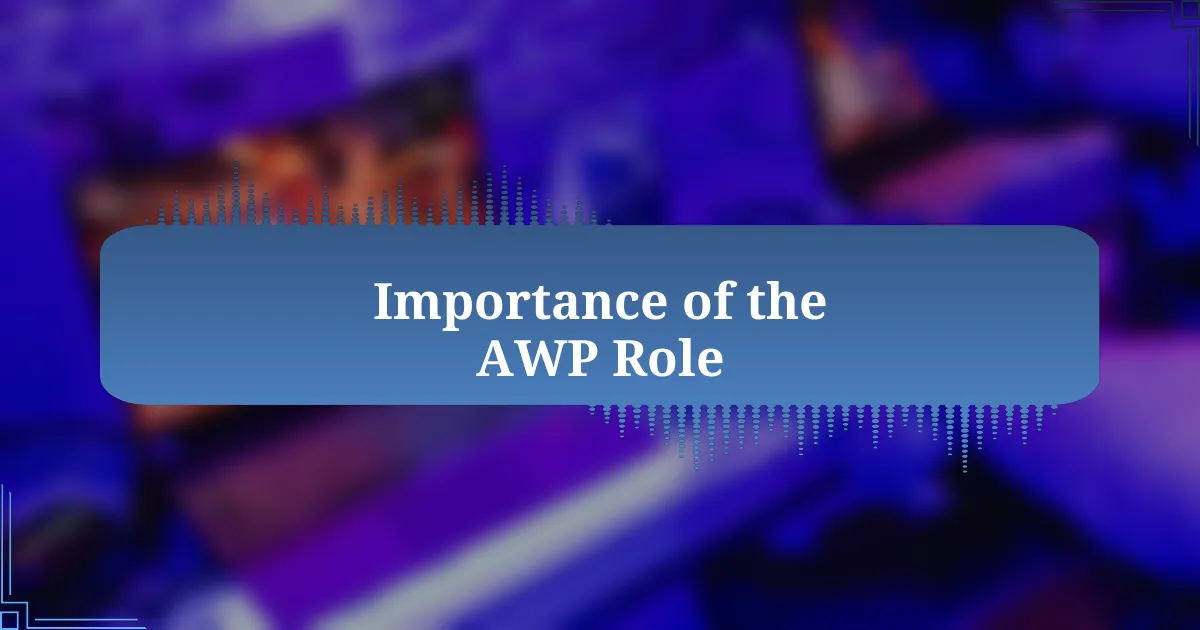
Importance of the AWP Role
The AWP role is critical in any game of CS2, often serving as a game-changer. When you’re on the map and holding that sniper rifle, you’re not just a player; you become a strategist. I recall a tense moment during a tournament when my team was on the brink of defeat. It was up to me to cover our push, and with each successful shot, I could feel the adrenaline coursing through me—it shifted the entire momentum of the game.
What I appreciate most about being the AWP player is the psychological impact it has on both your team and opponents. As the designated sniper, you carry the weight of expectation, and that can be both empowering and intimidating. There were matches where my mere presence at an angle forced enemies to alter their tactics. It made me reflect on how vital positioning and map control is in this role. Have you ever felt that shift in tension when you step into the role of a sniper? It’s a unique experience that can elevate your performance and that of your entire team.
Moreover, the AWP role encourages communication and teamwork. When I changed my mindset from just focusing on my own shots to understanding my team’s movements, everything clicked. I remember once calling out to my teammates to slow down and let me find the right angle. That simple moment helped us secure a crucial round. The AWP isn’t just about individual skill; it’s about syncing with the team to create openings and capitalize on enemy mistakes.
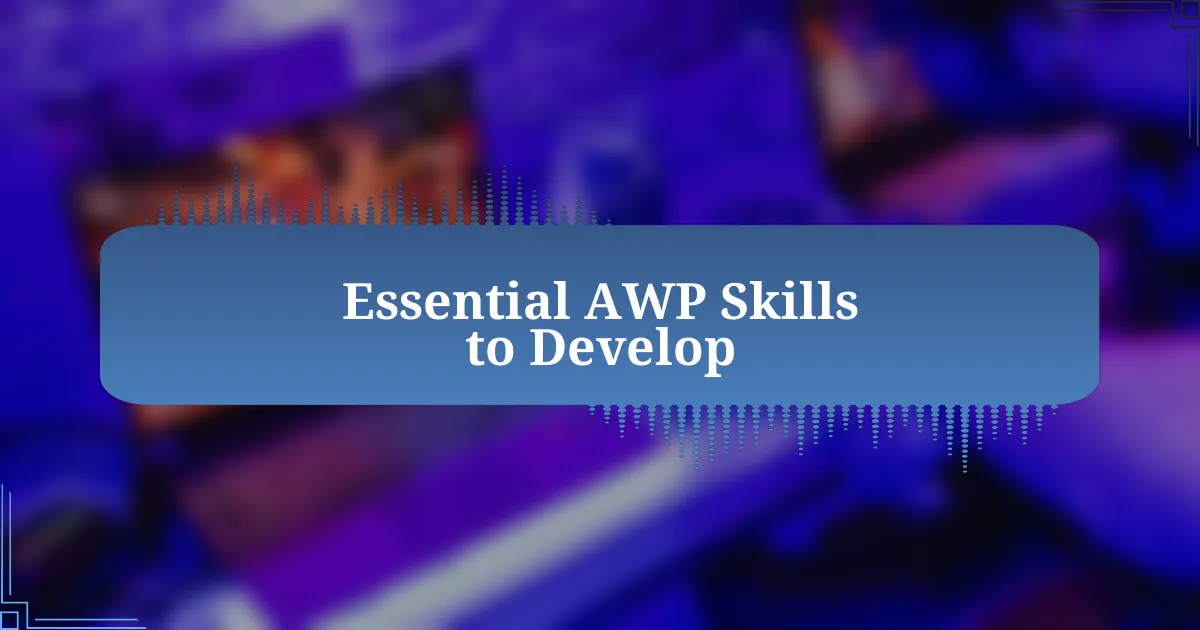
Essential AWP Skills to Develop
When developing your AWP skills, mastering crosshair placement is fundamental. I vividly remember a round where instead of snapping to the enemy, I kept my crosshair at head level while holding tight angles. It felt almost like a dance, anticipating their movement. This small adjustment allowed me to secure quick first kills, which changed the pace of that entire match. How often do you find yourself struggling to secure that first shot? Trust me, your aim will improve significantly with just a bit of practice in this area.
Another essential skill is understanding the mechanics of the AWP, especially how to utilize its one-hit kill potential effectively. I often think back to times when I’d take shots that, in retrospect, were rushed and uncalibrated. I found that slowing down and taking a breath before firing significantly increased my accuracy. Have you ever felt the frustration of missing a clear shot? It’s a common feeling, but recognizing moments when to shoot—and when to wait—can set you apart.
Lastly, positioning and map awareness are vital components of being a successful AWP player. During one of my matches, I placed myself high on a rooftop, offering an optimal view of the enemy’s approach. That vantage point not only protected me from aggressive pushes but also allowed my team to regroup and strategize effectively. It’s not just about where you are, but how you use that position to influence the game. Are you utilizing the map to your advantage? Your insights into positioning can change how you approach every round.
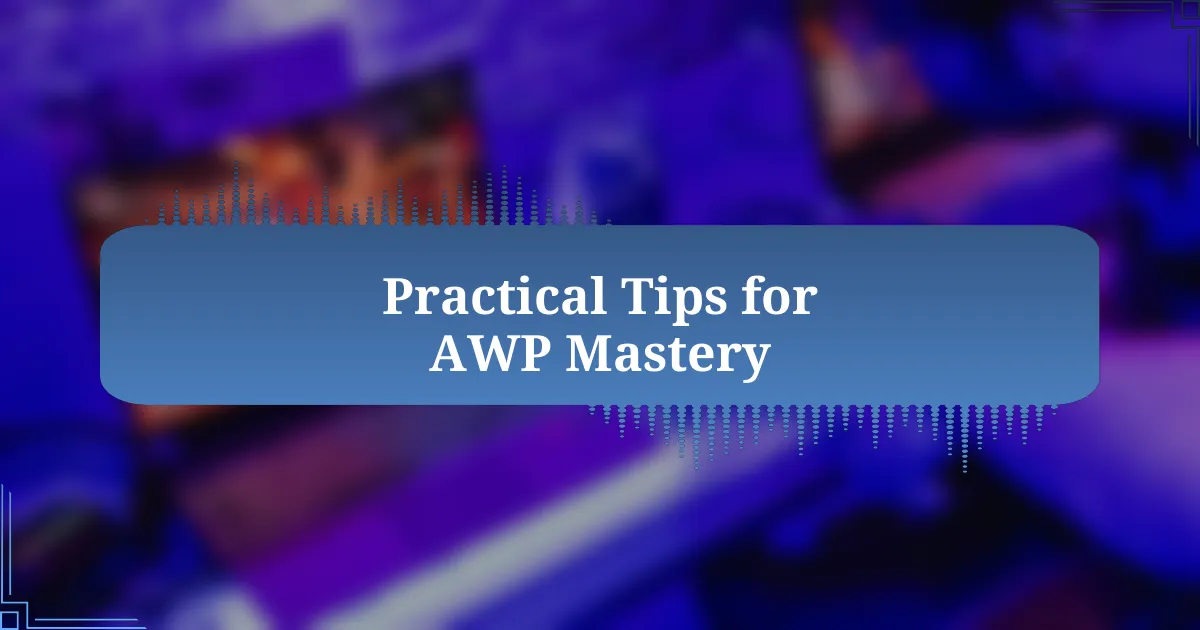
Practical Tips for AWP Mastery
Knowing how to manage your economy is crucial when it comes to mastering the AWP. I remember a pivotal game where I stuck to my budget and prioritized saving for the AWP. This strategy led to a game-changing moment where I secured a 3k in a single round just because I had the right weapon at the right time. Ever faced the dilemma of wanting to drop a gun for a teammate but knowing it could cost your own game? Being disciplined with your in-game finances not only strengthens your role but boosts team morale.
Practicing your movement while scoped is another often overlooked tip. I learned this the hard way after repeatedly getting taken out because I was standing still while trying to aim. By incorporating strafing into my scoping technique, I became a more elusive target, making it much harder for enemies to hit me. Did you ever notice how awkward it feels to stand still when expecting an enemy to pop out? Trust me, adapting your movement is key to staying alive and landing those critical shots.
Lastly, don’t underestimate the importance of communication with your team. I still remember a time when I called out enemy positions while peeking corners, allowing my teammates to get the jump on unsuspecting foes. This kind of synergy can turn the tide of the game more than a lone AWP shot ever could. Have you ever played a match where poor communication led to missed opportunities? Building rapport with your teammates can create a supportive environment that enhances not just individual performance but the team’s success as a whole.
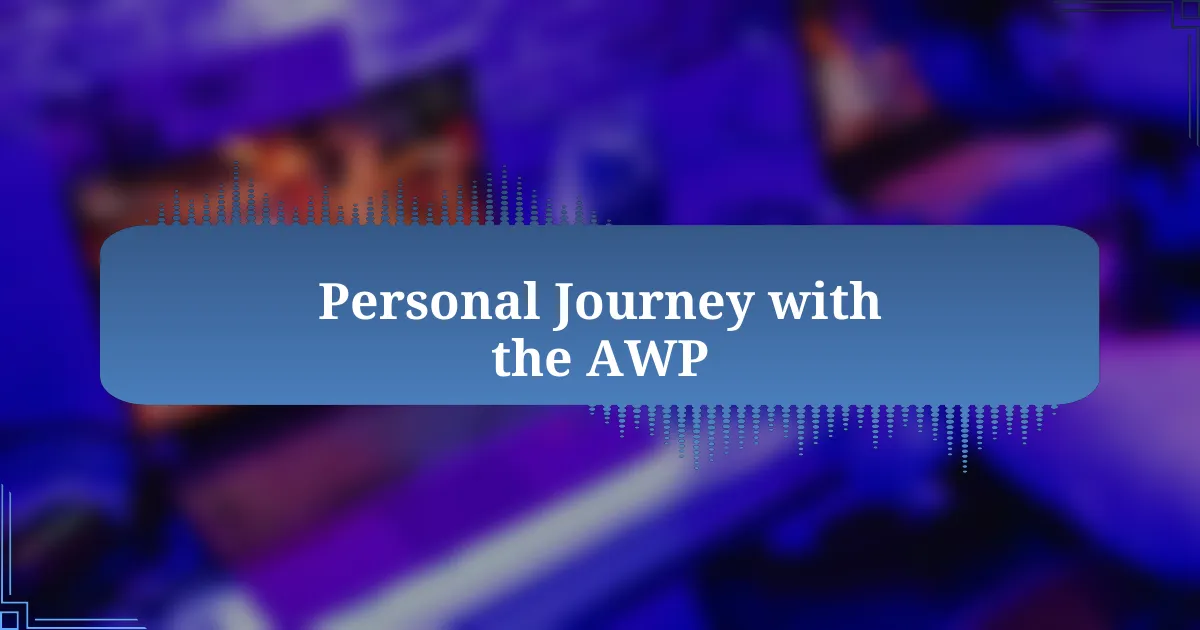
Personal Journey with the AWP
I remember the first time I picked up the AWP in Counter Strike 2; it felt like wielding a sword. The thrill of landing that first one-tap shot was electrifying, but it quickly turned to frustration when I discovered that one mistake could cost the whole round. Have you ever felt the weight of expectation when holding such a powerful weapon? That pressure pushed me to train harder, turning mistakes into stepping stones.
As I continued my journey, I realized that patience is essential. There were matches where I would get frustrated after missing shots, only to find that taking a moment to breathe and reassess my aim made all the difference. I vividly recall a match where I kept rushing my shots, leading to nothing but enemy respawns. In those moments, I learned that it’s not just about pulling the trigger but about understanding the rhythm of the game.
Now, I often think about the emotional rollercoaster the AWP puts you through during a match. There were rounds where I single-handedly secured a victory with a clutch play, but then seconds later, I would miss an easy shot, leaving me disappointed. It’s a constant ebb and flow of confidence and doubt. Does that resonate with you? Embracing those ups and downs shaped my skills and mindset, transforming me into a more versatile player.
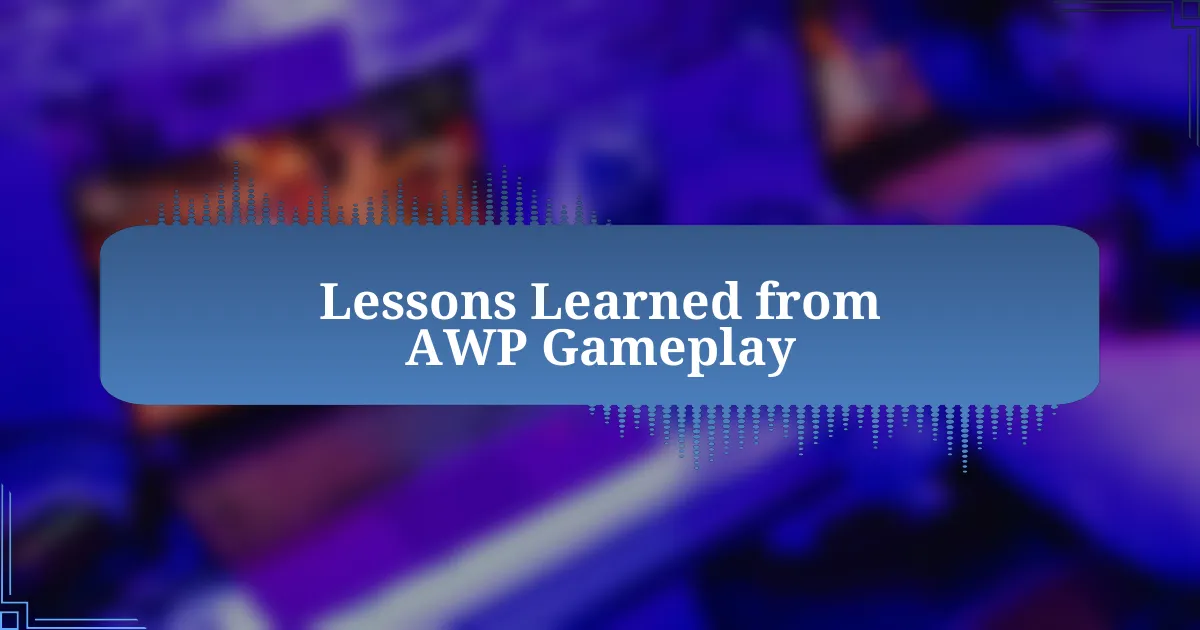
Lessons Learned from AWP Gameplay
The AWP teaches you that positioning is everything. I remember a clutch situation where I decided to hold my ground on a narrow angle. As an enemy pushed through, I felt this rush of adrenaline, and having the right spot made all the difference; my precise shot not only secured my life but also swung the momentum of the match in our favor. Have you ever experienced the power of finding that perfect vantage point?
Another crucial lesson I absorbed was the importance of game sense. Early on, I would sometimes get tunnel vision, focusing solely on my scope. There was a match where I failed to notice an enemy flanking me because I was too concentrated on my crosshairs. After that, I realized that being aware of my surroundings made me not just a better sniper but a more complete player. How often do you remind yourself to look beyond the immediate threat?
Lastly, mastering the AWP instilled in me the value of teamwork. There were times when I would get too caught up in sniping that I forgot to coordinate with my teammates. I vividly recall one match where I communicated my position and strategy with my team, and it led to us setting up the ultimate trap for the enemy. When you align your gameplay with your teammates, you amplify your potential, and I believe that’s a lesson worth holding onto. Wouldn’t you agree?
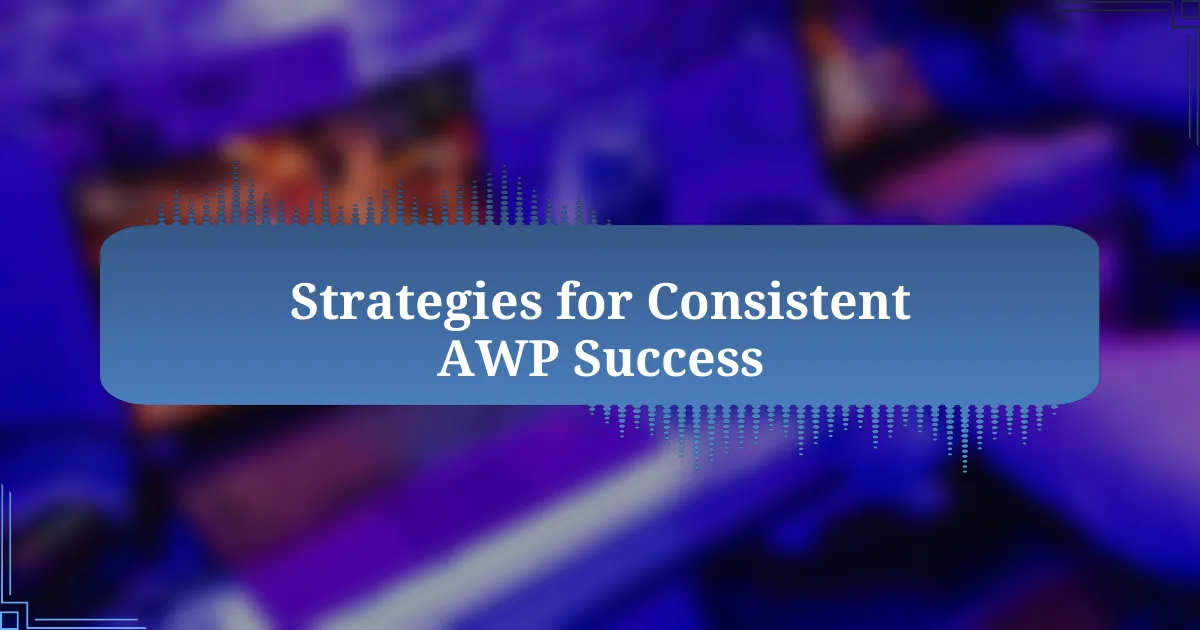
Strategies for Consistent AWP Success
When I think about consistent AWP success, one strategy that comes to mind is mastering the art of pre-aiming. I remember a match where I anticipated enemy movements, positioning my crosshairs perfectly around a corner before they even stepped into my line of sight. This not only saved me precious time but also allowed me to take down my opponents before they realized I was there. Have you ever practiced anticipating your enemies’ paths to gain that crucial edge?
Another vital aspect is regularly practicing your flick shots. There was a period when I dedicated my warm-up sessions strictly to flick aiming drills; it transformed my gameplay significantly. By refining those quick wrist movements, I found myself snapping to enemies with a newfound accuracy. It’s amusing how such a simple adjustment can lead to such satisfying results, isn’t it?
Lastly, I can’t overstate the importance of adjusting your mindset between rounds. I recall instances where I let past failures weigh me down, affecting my confidence in subsequent rounds. By consciously shaking off those mistakes and treating each round as a fresh opportunity, I noticed a significant change in my performance. How often do you remind yourself to reset and focus on the present?











